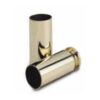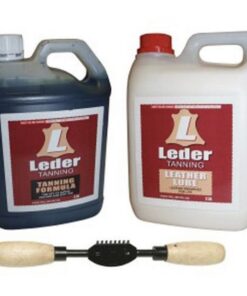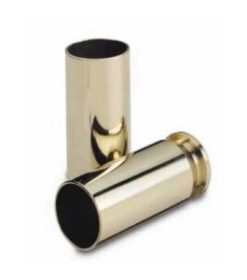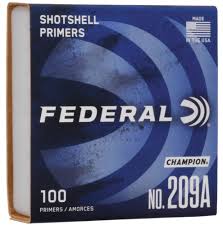45/70 Reloading Unprimed Cases
$75.00
Reloading Unprimed Cases: Exploring the World of .45-70 Government Ammunition | 75ct
45/70 Reloading Unprimed Cases
Reloading ammunition is a fascinating and rewarding endeavor for firearm enthusiasts, allowing them to tailor their rounds to specific needs and preferences. Among the many cartridges used in firearms, the .45-70 Government stands out as a classic and powerful option. Reloading unprimed cases for the .45-70 presents an opportunity to craft custom ammunition that meets your shooting requirements. In this article, we’ll delve into the world of .45-70 reloading, discussing its specifications and the steps involved in reloading unprimed cases.
.45-70 Government: A Brief Overview
The .45-70 Government cartridge has a rich history, originating from its adoption by the U.S. military in 1873 for the Springfield Model 1873 “Trapdoor” rifle. Designed as a black powder cartridge, it has seen numerous variations and improvements over the years to adapt to modern smokeless powder and bullet technology.
The cartridge’s name reflects its caliber (.45) and the 70 grains of black powder it was originally loaded with. The .45-70 has remained a popular choice among hunters, sport shooters, and enthusiasts who appreciate its power and versatility. It’s commonly used for hunting medium to large game and is known for its stopping power and effective range.
Reloading Unprimed Cases: Specifications and Steps
Reloading unprimed cases for the .45-70 Government involves several key specifications and steps to ensure safety, accuracy, and consistency. Here’s a breakdown of the process:
1. Gather Your Components:
- Unprimed Brass Cases: Start with high-quality unprimed brass cases designed for the .45-70. Brands like Hornady, Remington, and Winchester offer reliable options.
- Bullets: Choose bullets based on your shooting requirements, whether it’s hunting, target shooting, or other applications.
- Powder: Select a suitable smokeless powder for the .45-70. Reference reloading manuals or powder manufacturer data to determine appropriate charges.
- Primers: Choose primers compatible with the .45-70 cartridge. Small rifle primers are commonly used.
2. Inspect and Clean Cases: Inspect each unprimed brass case for signs of damage or defects. Clean the cases using a tumbler or other cleaning methods to remove dirt, debris, and oxidation.
3. Resize and Deprime: Use a resizing die to reshape the case to its proper dimensions. This step also removes the spent primer from the previous firing. Lubricate the cases before resizing to prevent sticking.
4. Trim and Chamfer: After resizing, trim the cases to the specified length using a case trimmer. Chamfer the inside and outside of the case mouth to ensure smooth bullet seating.
5. Prime the Cases: Insert a new primer into the primer pocket using a priming tool. Make sure the primer is seated flush with the case head.
6. Charge with Powder: Carefully measure the appropriate powder charge according to reloading manuals or manufacturer data. Use a powder scale for accuracy. Pour the powder into each primed case.
7. Seat the Bullet: Select the desired bullet and adjust the seating die to the correct depth. Seat the bullet in the case, making sure it’s properly aligned and seated to the desired depth.
8. Crimp (if necessary): Depending on your shooting needs, you may choose to apply a crimp using a crimping die. Crimping prevents the bullet from moving within the case during recoil.
9. Inspect and Test: Visually inspect each reloaded cartridge for proper assembly. Use a case gauge to ensure the rounds fit properly in your firearm’s chamber. Start with lower powder charges and work your way up while testing for accuracy and pressure signs.
10. Record Keeping: Maintain a meticulous record of your reloading data, including powder charges, bullet types, seating depths, and performance results. This information will be invaluable for consistency and safety in the future.
Reloading unprimed cases for the .45-70 Government can be a gratifying experience, allowing you to fine-tune your ammunition to meet your specific shooting goals. However, it’s crucial to follow recommended load data, safety guidelines, and best practices to ensure the safety of yourself and others while achieving optimal performance from your reloaded rounds. Always consult reliable reloading manuals and reputable sources for accurate information on reloading techniques and specifications.











